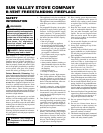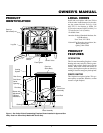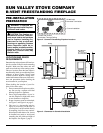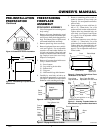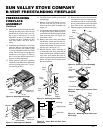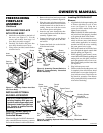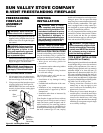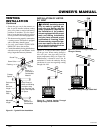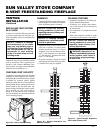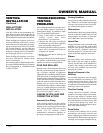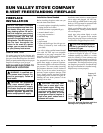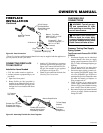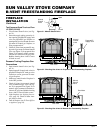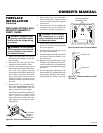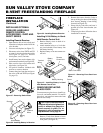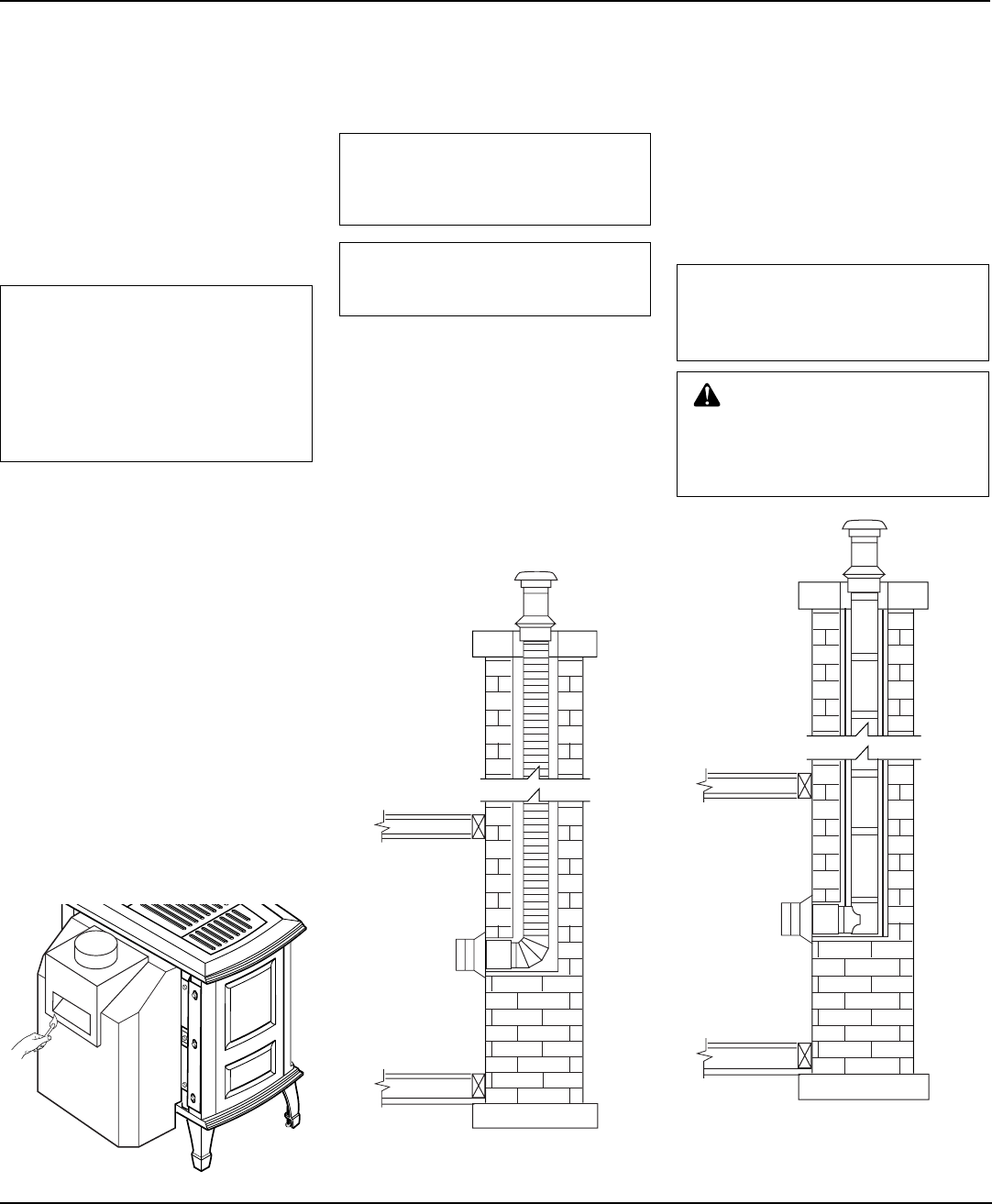
10
B-VENT FREESTANDING FIREPLACE
106022
SUN VALLEY STOVE COMPANY
VENTING
INSTALLATION
Continued
CHECKING VENT CAPACITY
Complete all gas piping, electrical, and vent
connections. After adjusting the fireplace
and lighting the main burners, allow a couple
of minutes for warm-up. Hold a lighted
match just under the rim of the draft hood
relief opening. Proper venting will draw the
flame toward or into the draft hood. Im-
proper venting, indicated by escape or spill-
age of burned gas, will cause match to
flicker or go out. Smoke from a cigarette
will also be pulled into the draft hood if the
vent is drawing properly.
Figure 25 - Test for Proper Venting
• Complete familiarity with chimney con-
dition, height, size, clearance to combus-
tibles and other factors is essential.
CHIMNEYS
NOTICE: Consult the authority
having jurisdiction in your area
regarding masonry chimney vent-
ing applications.
NOTICE: A complete chimney
inspection by a qualified person
should be performed.
• Appliances using B-vent connectors to
vent into a masonry or factory-built
chimney should not exceed 1
1
/2 feet in
length for every inch of connector diam-
eter (3" vent connector has a maximum
4
1
/2 foot length; 5" connector has maxi-
mum 7
1
/2 foot length).
• Oversized chimneys should be relined
with appropriate listed relining systems.
• Cleanout access may be required.
NOTICE: Consult the authority
having jurisdiction in your area
regarding listed chimney liner
venting applications.
WARNING: Operation of im-
properly installed and maintained
venting system could result in
serious injury, property damage,
or loss of life.
RELINING SYSTEMS
• Suitability and approval of relining ma-
terials should be determined.
• Condition, size, height, and termina-
tion of the chimney to be relined must
be determined.
• No substitution of components should
be made.
• Joints and connectors should be made
according to manufacturer’s instructions.
Figure 26 - Straight Installation into
Masonry Chimney
Figure 27 - Typical Straight Installation
with Listed Chimney Liner
INSTALLING VENT SYSTEM
IN A CHASE
A chase is a vertical boxlike structure built
to enclose venting that runs along the out-
side of a building. A chase is not required for
such venting.
NOTICE: Treatment of firestops
and construction of the chase
may vary from building type to
building type. These instructions
are not substitutes for the re-
quirements of local building
codes. You must follow all local
building codes.
Note:
When installing in a chase, you should
insulate the chase as you would the outside
walls of your home. This is especially im-
portant in cold climates. Minimum clear-
ance between vent pipes and combustible
materials such as insulation is 1".



